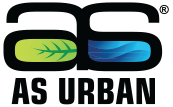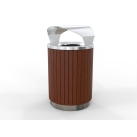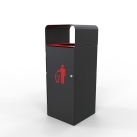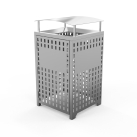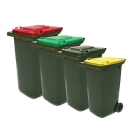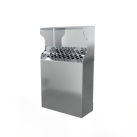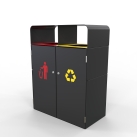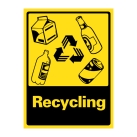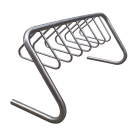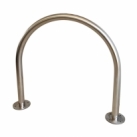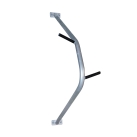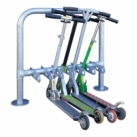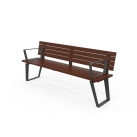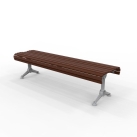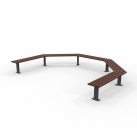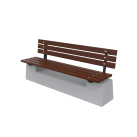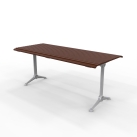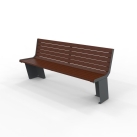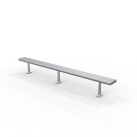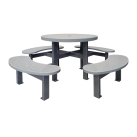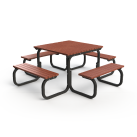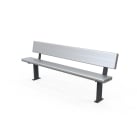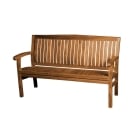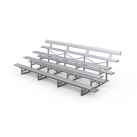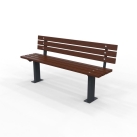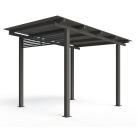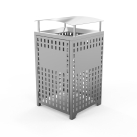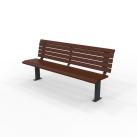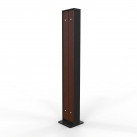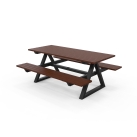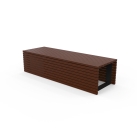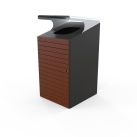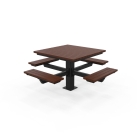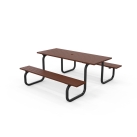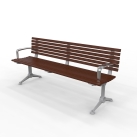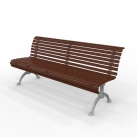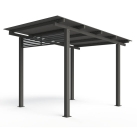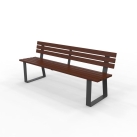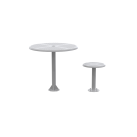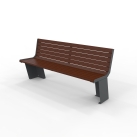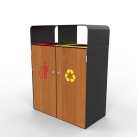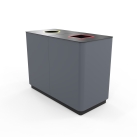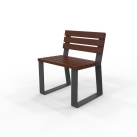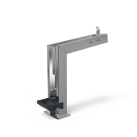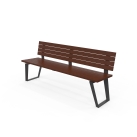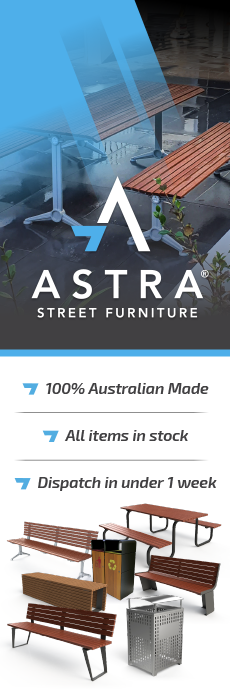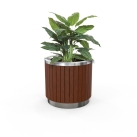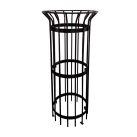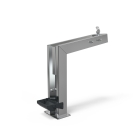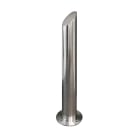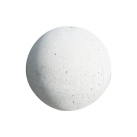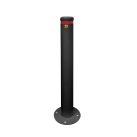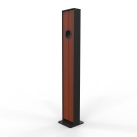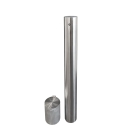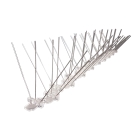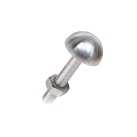Shopping Centre Bins - Where Can I Put My Rubbish?

Did you know that one of the biggest reasons for rubbish lying around shopping centres, is a lack of bins, or bins that can’t be found easily?
You might be
asking any of the following FAQ about bins –
- What is the best position for a shopping centre bin?
- What type of bin stands out the best?
- How can I clearly identify the waste streams on the bins?
- What signage should be put on the bins?
- What minimum bin capacity do I need?
- How can I maximise capacity but also keep within WHS regulations for lifting?
- Should I have them lockable or not?
- What bins are easy to empty?
- What bins are easiest to clean?
- What outdoor bins are best at keeping birds out?
The
following factors all enter into planning for recycling bins and rubbish bins to
reduce unwanted litter.
BIN POSITIONING:
Positions for Internal Bins:
- Close to the source of rubbish (e.g. food court, cafeteria, washroom).
- Near entry and exit doors, reception foyers and waiting rooms).
- Just off the main walkway (avoid encroachment for DDA).
- Neat but not inconspicuous – a bin should stand out but also match in with the décor. (If a bin can’t be seen quickly, the rubbish will likely get tossed).
- Easily seen and not so far away that people won’t walk to them. Recommended spacing is a maximum of 10m apart.
Positions for External Bins:
- Close to the source of rubbish (e.g. cafeteria, car parks, bus stops and other transport hubs).
- Near entry and exit doors.
- Easily seen and not so far away that people won’t walk to them. Recommended spacing is 10-20m apart.
- Adjacent to pathways.
- Near to a corner or crossway.
- Neat but not inconspicuous. (If a bin can’t be seen quickly, the rubbish will likely get tossed).
BIN VISIBILITY:
Bin visibility is highly
dependent on their colour. For bins to stand out, they need to be a contrasting
colour to the general décor while at the same time looking like they belong. For
instance if you have black pots or dark coloured seating, go for a bright
stainless steel bin like the Boston Bin, Edgecliff Bin, Domain Bin or Cyclo Recycling Bins.
WASTE
STREAM IDENTIFICATION:
For
clearly identifying the waste stream for a bin, it must be colour coded with
the Australian Standard waste stream colour requirements. This can be achieved
with colour-coding the top rim (rubbish slider), colour coded signage, or
customisation of the bin e.g. the door colour, covered top colour, recycling
chute inserts or colour coding the whole bin.
Easy
identification of bins and what type of rubbish goes in them for waste
separation and recycling is mainly dependent on signage. Clear demarcation is 90%
of the answer to getting the right type of rubbish placed in the right bin. The
best bin sign is colour coded with the
waste stream colour, has large text to see from a distance, and includes pictos
of the types of rubbish. AS Urban prints standard and custom bin signs with short lead times.
BIN
CAPACITY:
The
optimum capacity for a bin is determined by the amount of foot traffic (how
busy the facility is) and the distance between the bins. Larger bins generally
need emptying less often. According to a Roy Morgan report dated 10/12/2015, the top 2
busiest shopping centres in Australia by customer volume are Chadstone Shopping
Centre and Westfield Parramatta with almost 400,000 visitors in an average 4
week period (100,000 per week). A good size bin for inside smaller centres is
approximately 40-50L like the Manhatten 54L Bin or Classic 40L Bin. For larger centres, the Edgecliff 65L Bin up to the Boston 105L Bin is a more appropriate size.
WHS
WEIGHT LIMIT FOR BINS
There
is no longer a weight limit above which it is illegal for persons to lift.
Instead, all aspects of the risk involved with lifting should be assessed. This
includes the physical size of the bin, whether it has handles to make it easier
to lift, how heavy the type of rubbish is and how far the bin needs to be
carried, if at all. Heavier bins may need to be smaller or emptied more often. AS
Urban bin liners have handles for easy lifting.
LOCKABLE
BINS:
External bins should be lockable to
prevent tampering, limit illicit behaviour (drug trafficking), for protection from
animals and for hygiene, especially where there are lower levels of security.
Bins inside shopping malls don’t necessarily need to be locked due to a higher level
of security surveillance. Make sure the cleaners are happy! Some cleaners are
used to carrying keys and unlocking bins as they do the rounds. Others detest
locked bin cabinets and prefer the convenience and speed of not having to
unlock each bin to empty the internal liner.
EASY
BINS TO EMPTY:
The
easiest bins to empty are those with a strong but lightweight removable
internal liner or wheelie bin inside the bin enclosure.
EASY
TO CLEAN BINS:
The
easiest bins to clean are those that have a smooth flowing shape with no
grooves, lips, flaps or sharp corners, especially on the top rubbish slider around
the rubbish opening that needs cleaning more frequently.
HOW
TO KEEP BIRDS OUT OF BINS:
Birds
are often responsible for strewn rubbish in outdoor environments. To limit bird
access, bins must be emptied frequently to prevent them filling completely. The
other important factor to repel bin chickens is the design: Covered tops on outdoor
bins like the Athens Bin Enclosures or Jamison Plus Bins are effective in preventing
birds. Covered tops:
1.
Stop the birds seeing the rubbish from overhead
2.
Limit the birds from sitting on the bin opening
3.
Make it harder for birds to reach the rubbish
4. Prevent birds keeping watch for predators (if they venture under the cover). This makes the birds feel more vulnerable.
AS Urban is the supplier of choice with a large range of bin styles for every environment.

